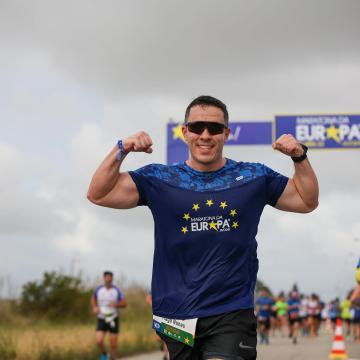Subscribe to our newsletter to find out about all the news and promotions, and automatically receive a welcome discount coupon in your email.

Iron deficiency: hematological disorders in popular corridors
by Paco Amoros
Interest in exercise, especially running, has seen a dramatic increase in recent years. As an example, in 1985 it was estimated that there were more than 35 million people who were long-distance runners in the United States. But... have any of them suffered from problems of iron deficiency?
In the Valencian Community, the first edition of the circuit Racancer for the Spanish Association Against Cancer, got 4.500 participants in its first call of 2016, in this year's edition (2018) 14.000 registered are expected.
The increase in physical activity, with undoubted positive values for health, is also generating biological disorders related to it.
Some runners are beginning to experience tiredness, irritability, loss of ability to concentrate, drowsiness, frequent yawning... In short, a state of loss of form for which they cannot find an explanation.
When these runners have had blood tests, the existence of iron deficiency has been shown, which could be at the origin of the symptoms described. In short, anemic pictures that explained the loss of fitness.
Iron deficiency
There are several mechanisms related to long-distance runners, by which an anemic state of iron deficiency can occur:
1. Hemolysis (rupture of red blood cells)
This fact was described for the first time during World War II, when observing dark urine (hematuria) in soldiers after carrying out large marches, which forced the investigation of new materials that cushion the impact of the feet on the ground, avoiding the rupture of red blood cells, hematuria and consequently avoid hemolytic anemias of mechanical origin.

2. Iron deficiency (decreased circulating iron)
It is another circumstance by which iron deficiency can occur (with or without anemia) and whose most frequent cause is excessive loss from sweating. Under normal conditions, as a consequence of the sweating that produces the cellular desquamation, 0,4 to 0,6 mg of iron (Fe) are lost daily. Obviously in any athlete these losses are increased, between three to four times, depending on the level of training, weather and physical constitution.
3. Anemias of hemorrhagic origin
Here in the first place, it is necessary to point out the iron-deficiency anemias of women as a consequence of menstrual losses, to which we must add anemias due to lack of Fe -iron- of male runners.
The most important anemias due to hemorrhagic losses are those of gastrointestinal origin. In two studies, carried out on non-professional long-distance runners, it was observed that out of a total of 56 runners, 50 of them had hemorrhagic losses in the stool. The cause of these hemorrhages is not completely known, but the results seem to point towards the possibility that during physical exercise, there is a decrease in blood flow in the intestine causing small injuries that conditioned these hemorrhagic losses. It was also observed that they occurred more frequently among those runners who took aspirin or anti-inflammatories before the races.
In any case, what matters is to keep running, anemias related to this sport have a relatively easy solution.
The Eliana
June 11th, 2018
Jose Mayans Ferrer
Hematologist doctor
42K · All rights reserved














Comments
Post a first comment for this entry!